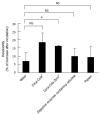Review of the diagnosis and management of gastrointestinal bezoars
- PMID: 25901212
- PMCID: PMC4400622
- DOI: 10.4253/wjge.v7.i4.336
Review of the diagnosis and management of gastrointestinal bezoars
Abstract
The formation of a bezoar is a relatively infrequent disorder that affects the gastrointestinal system. Bezoars are mainly classified into four types depending on the material constituting the indigestible mass of the bezoar: phytobezoars, trichobezoars, pharmacobezoars, and lactobezoars. Gastric bezoars often cause ulcerative lesions in the stomach and subsequent bleeding, whereas small intestinal bezoars present with small bowel obstruction and ileus. A number of articles have emphasized the usefulness of Coca-Cola(®) administration for the dissolution of phytobezoars. However, persimmon phytobezoars may be resistant to such dissolution treatment because of their harder consistency compared to other types of phytobezoars. Better understanding of the etiology and epidemiology of each type of bezoar will facilitate prompt diagnosis and management. Here we provide an overview of the prevalence, classification, predisposing factors, and manifestations of bezoars. Diagnosis and management strategies are also discussed, reviewing mainly our own case series. Recent progress in basic research regarding persimmon phytobezoars is also briefly reviewed.
Keywords: Bezoars; Endoscopic removal; Gastric ulcer; Gastrointestinal endoscopy; Ileus; Persimmon phytobezoar; Trichobezoar.
Figures



References
-
- Sanders MK. Bezoars: from mystical charms to medical and nutritional management. Pract Gastroenterol. 2004;18:37–50.
-
- Iwamuro M, Urata H, Furutani M, Kawai Y, Shiraha H, Takaki A, Okada H, Yamamoto K. Ultrastructural analysis of a gastric persimmon phytobezoar. Clin Res Hepatol Gastroenterol. 2014;38:e85–e87. - PubMed
-
- Iwamuro M, Tanaka S, Shiode J, Imagawa A, Mizuno M, Fujiki S, Toyokawa T, Okamoto Y, Murata T, Kawai Y, et al. Clinical characteristics and treatment outcomes of nineteen Japanese patients with gastrointestinal bezoars. Intern Med. 2014;53:1099–1105. - PubMed
-
- Iwamuro M, Kawai Y, Shiraha H, Takaki A, Okada H, Yamamoto K. In vitro analysis of gastric phytobezoar dissolubility by coca-cola, coca-cola zero, cellulase, and papain. J Clin Gastroenterol. 2014;48:190–191. - PubMed
Publication types
LinkOut - more resources
Full Text Sources
Other Literature Sources

